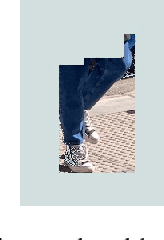David A. Kelly
SpecReX: Explainable AI for Raman Spectroscopy
Mar 18, 2025Abstract:Raman spectroscopy is becoming more common for medical diagnostics with deep learning models being increasingly used to leverage its full potential. However, the opaque nature of such models and the sensitivity of medical diagnosis together with regulatory requirements necessitate the need for explainable AI tools. We introduce SpecReX, specifically adapted to explaining Raman spectra. SpecReX uses the theory of actual causality to rank causal responsibility in a spectrum, quantified by iteratively refining mutated versions of the spectrum and testing if it retains the original classification. The explanations provided by SpecReX take the form of a responsibility map, highlighting spectral regions most responsible for the model to make a correct classification. To assess the validity of SpecReX, we create increasingly complex simulated spectra, in which a "ground truth" signal is seeded, to train a classifier. We then obtain SpecReX explanations and compare the results with another explainability tool. By using simulated spectra we establish that SpecReX localizes to the known differences between classes, under a number of conditions. This provides a foundation on which we can find the spectral features which differentiate disease classes. This is an important first step in proving the validity of SpecReX.
Causal Explanations for Image Classifiers
Nov 13, 2024



Abstract:Existing algorithms for explaining the output of image classifiers use different definitions of explanations and a variety of techniques to extract them. However, none of the existing tools use a principled approach based on formal definitions of causes and explanations for the explanation extraction. In this paper we present a novel black-box approach to computing explanations grounded in the theory of actual causality. We prove relevant theoretical results and present an algorithm for computing approximate explanations based on these definitions. We prove termination of our algorithm and discuss its complexity and the amount of approximation compared to the precise definition. We implemented the framework in a tool rex and we present experimental results and a comparison with state-of-the-art tools. We demonstrate that rex is the most efficient tool and produces the smallest explanations, in addition to outperforming other black-box tools on standard quality measures.
Real-Time Incremental Explanations for Object Detectors
Aug 21, 2024Abstract:Existing black box explainability tools for object detectors rely on multiple calls to the model, which prevents them from computing explanations in real time. In this paper we introduce IncX, an algorithm for real-time incremental approximations of explanations, based on linear transformations of saliency maps. We implement IncX on top of D-RISE, a state-of-the-art black-box explainability tool for object detectors. We show that IncX's explanations are comparable in quality to those of D-RISE, with insertion curves being within 8%, and are computed two orders of magnitude faster that D-RISE's explanations.
MRxaI: Black-Box Explainability for Image Classifiers in a Medical Setting
Nov 24, 2023



Abstract:Existing tools for explaining the output of image classifiers can be divided into white-box, which rely on access to the model internals, and black-box, agnostic to the model. As the usage of AI in the medical domain grows, so too does the usage of explainability tools. Existing work on medical image explanations focuses on white-box tools, such as gradcam. However, there are clear advantages to switching to a black-box tool, including the ability to use it with any classifier and the wide selection of black-box tools available. On standard images, black-box tools are as precise as white-box. In this paper we compare the performance of several black-box methods against gradcam on a brain cancer MRI dataset. We demonstrate that most black-box tools are not suitable for explaining medical image classifications and present a detailed analysis of the reasons for their shortcomings. We also show that one black-box tool, a causal explainability-based rex, performs as well as \gradcam.
You Only Explain Once
Nov 23, 2023



Abstract:In this paper, we propose a new black-box explainability algorithm and tool, YO-ReX, for efficient explanation of the outputs of object detectors. The new algorithm computes explanations for all objects detected in the image simultaneously. Hence, compared to the baseline, the new algorithm reduces the number of queries by a factor of 10X for the case of ten detected objects. The speedup increases further with with the number of objects. Our experimental results demonstrate that YO-ReX can explain the outputs of YOLO with a negligible overhead over the running time of YOLO. We also demonstrate similar results for explaining SSD and Faster R-CNN. The speedup is achieved by avoiding backtracking by combining aggressive pruning with a causal analysis.
Multiple Different Explanations for Image Classifiers
Sep 28, 2023Abstract:Existing explanation tools for image classifiers usually give only one single explanation for an image. For many images, however, both humans and image classifiers accept more than one explanation for the image label. Thus, restricting the number of explanations to just one severely limits the insight into the behavior of the classifier. In this paper, we describe an algorithm and a tool, REX, for computing multiple explanations of the output of a black-box image classifier for a given image. Our algorithm uses a principled approach based on causal theory. We analyse its theoretical complexity and provide experimental results showing that REX finds multiple explanations on 7 times more images than the previous work on the ImageNet-mini benchmark.
 Add to Chrome
Add to Chrome Add to Firefox
Add to Firefox Add to Edge
Add to Edge